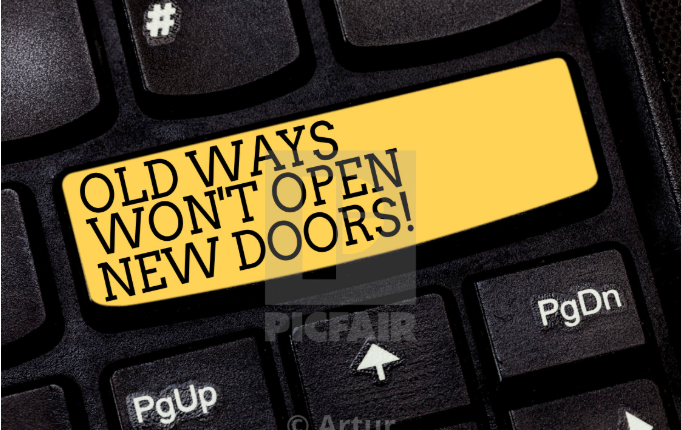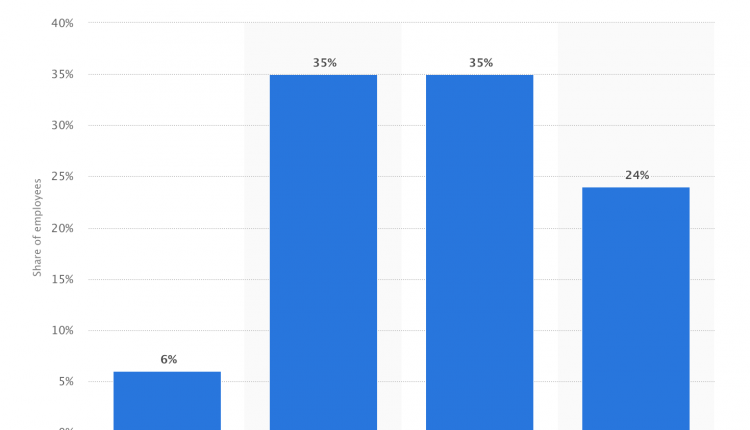Why You Shouldn’t Resist Collaboration and Remote Work
“The secret of change is to focus all of your energy, not on fighting the old, but on building the new.”
– Socrates
Key Takeaways:
- With the global population increasing to 7.5b people, a shift in employee demographics is expected to change the workforce.
- By 2020, 50% of the global workforce will be made up of Millenials and Gen-Z.
- Conventional tools & policies will no longer attract and retain talent as this generation of employees are driven by a variety of factors, and remote work and collaboration ranks as one of those key drivers.
So here it is.
We’ve crossed the 7.5b mark in terms of the global population if you haven’t heard yet. With 5b unique mobile users and 3.5b active social media users, it’s clear as daylight we can’t live without our phones. But that’s relatively obvious. Just look around you.
Something less obvious though is the total labor force within the global population. For that, we’d have to look at some interesting data from the International Labor Organization. According to the ILO, about 3.5b people have jobs. For the curious mind, the statistical concept and methodology are outlined on their website. But if you scratch further under the surface, you’d quickly notice an interesting composition of the workforce. By 2020 the global workforce would comprise only 6% of baby boomers. The remaining 70% of the workforce will be made up of Gen-X and Millennials (or Gen-Y). Meanwhile, Gen-Z rounds up the balance of 24%.
For clarity, generation names and age spans are defined somewhat differently depending on country and/or region. Roughly speaking, the subsequent generation names and age spans are considered “global” generations¹.
- Baby Boomers: 1946–1964
- Generation X: 1965–1980
- Millennials: 1981-1996
- Post-Millennials/Generation Z: After 1997
Change: A new generation enters the workforce
In the past, most businesses have focused on understanding the needs of Millenials while searching for talent. Many businesses identify Millennials as an immediate or near-term labor pool.
Older Millennials, a 1981-1988 born subgroup, express certain characteristics in their approach to work. They have drastically higher expectations for their lives and prospects, and some may say these borders unrealistic demands. It is probably the result of being raised by Baby Boomer parents, who protected Older Millennials from many of the dangers of the world and gave them a strong sense of individualism.
Nonetheless, its this very sense of individualism that has paved the way for change in the workplace. They have challenged norms, questioned authority, pushed for transparency and reignited remote work & work-life balance among other things.
Many Older Millennials are now inching into middle and senior management and are between the ages of 31-39. This is well known by the majority of companies, although they may struggle to make them feel completely accepted.
On the flip side, harsh economic realities have been part of the lives of Younger Millennials and Gen Z as they’ve matured. They have experienced the global recession and its lasting impact and are living in a time of great social change. These are the first generations for whom digital technology is intrinsic to their way of life, and their parents have been less able to shield them from news stories that are alarming and disturbing.
As a result, Gen Z and Younger Millennials differ radically from Older Millennials, with new perceptions, beliefs, and aspirations of life and unique demands for jobs. Younger Millennials and Gen Z have an ambitious and “do-it-myself” mindset. They have grown up looking for answers on the internet, YouTube and their global peers. They’ve watched people from their generation build successful businesses on their own.
Generational Gap
The 2015 AfterCollege Career Insight Survey reviewed how undergraduate, graduate students, and recent college grads viewed potential jobs, and it found that 68 percent wanted jobs where they could work remotely.
Yet many top company executives come from a different generation: Gen-X members or Baby Boomers, and are used to a more conventional workplace.
Millennials and Gen-Z are what’s to come. There’s no denying this. Both these generations fully comprehend what they need. And their natural instincts will see them lean them towards employers who recognize their needs.
One such need as recently referenced is remote work. The view on remote work is generally divided. A view divided between the old guard and the new breed of workforce.
The idea of ending remote work appears to be motivated by the notion of going back to the way things – in hopes of restoring past glory. At least this is what may have inspired Michelle Peluso & Marissa Mayer when they made headlines for calling remote workers back to the office.
Some remote workers, in this case, were given impossible choices to relocate across the country or face termination. The issue with this “my way or the highway” policy though is that it completely ignores how remote work ties into employee satisfaction over the last decade.
SEE – 17 stats about remote work in 2019
The younger generation are well aware and confident they can be anywhere, virtually. If employees are producing valuable output, it doesn’t make a difference where they are physically. It, however, remains crucial to treat your employees as adults and respecting their personal lives, because in the end that pays-off.
Collaboration makes distributed work the norm, not the exception
As a Gen-X’er, I vividly recall my manager calling me in for an explanation even if I was 5 minutes late to my desk. In those days, it was nearly impossible to work outside. And the idea of collaboration back then was sitting in long counterproductive meetings.
SEE – Productivity: Expectation vs. Reality
True collaboration is the new normal today. You could say the genie is out the bottle and it’s here to stay. There’s no putting it back. While the older guard may take a defensive stance or even reject the idea of remote work outright, it’s impossible to ignore how far technology has come.
Collaboration and team-work both within or beyond the walls of traditional office space is now a reality thanks to inexpensive cloud solutions, higher processing power and cost-effective devices for people to work anywhere, anytime. Thanks to Moore’s law, a single Apple iPhone 5 has 2.7 times processing power over the 1985 Cray-2 supercomputer.
The influx of productivity tools available in the marketplace allows businesses and individuals to choose what works best for them. You could find tools which helps you organize emails, store & share files seamlessly, video conference with colleagues, manage task and set goals, and the list goes on.
“Technology now allows people to connect anytime, anywhere, to anyone in the world, from almost any device. This is dramatically changing the way people work, facilitating 24/7 collaboration with colleagues who are dispersed across time zones, countries, and continents.” — Michael Dell, Chairman, and CEO of Dell
With so many of these tools available, it’s understandable finding one that best fits you or your team is anything, but easy. Whilst every team operates as a living organism with specific functions, workflows & processes, it’s imperative to acknowledge no single tool will address every requirement towards the holy grail of collaboration. What works for one team or group of people within an organization doesn’t necessarily mean it’s going to work for others. The sales team may need a tool that helps track leads, conversion, and appointments. The folks over in projects are driven by milestones and deliverables towards project completion and signing-off.
Whatever these needs are, it’s significant to have critical stakeholders talking and communicating with each other in real-time. Ever so often, these communication takes place on social messaging apps, outside of the office. Tracking what’s said or done on these apps becomes a massive challenge in itself.
Luckily, there are a variety of alternatives. No matter if you’re starting out research to implement team collaboration, or a pro Slacker finding the 10,000 message limit a little crippling, here’s a list of 30 team collaboration tools for you to consider.
For any business – regardless of a startup or global player – collaboration is the way for long term growth and sustainability. Interactions built & nurtured with others, particularly among colleagues with a common & shared vision will enable your business to function as large global corporations do. Thanks to technology and innovation, developing and harnessing these interactions within your team doesn’t have to wait. Subsequently, it also doesn’t require a gargantuan budget needing layers of approval.
If you hit a snag, simply bear in mind, old ways won’t open new doors.







[…] interest for start-ups or enterprises to look at ways to improve efficiencies and productivity. The future of work is here and […]
You made some good points there. I did a search on the issue and found most people will consent with your site.
Fine way of describing, and pleasant piece of writing to get information concerning my presentation subject